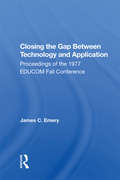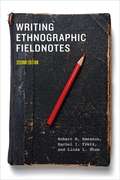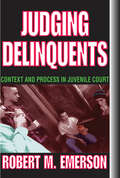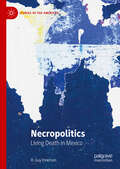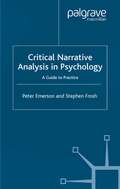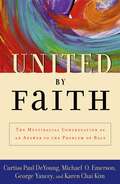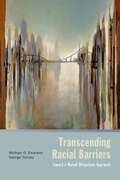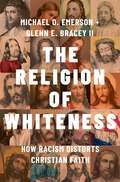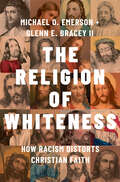- Table View
- List View
Closing The Gap Between Technology And Application
by James C. EmeryThis book presents analyses, from three points of view, of the use of computing technology in higher education. It considers application areas including office automation, distributed academic computing, distributed administrative computing, instructional systems, and information resources.
Reframing Japonisme: Women and the Asian Art Market in Nineteenth-Century France, 1853–1914 (Contextualizing Art Markets)
by Elizabeth EmeryJaponisme, the nineteenth-century fascination for Japanese art, has generated an enormous body of scholarship over the last twenty years, but most of it neglects women, who also acquired objects from the Far East and displayed them in their homes before selling or bequeathing them to museums. The stories of women collectors and shopkeepers rarely appear in memoirs left by those associated with the japoniste movement.The present volume thus brings to light the culturally important, yet largely forgotten artistic activities of women such as Clémence d'Ennery (1823-1898), who began collecting Japanese and Chinese chimeras in the 1840s, built a house for them in the 1870s, and bequeathed the 'Musée d'Ennery' to the state as a free public museum in 1893. A friend of the Goncourt brothers and a fifty-year patron of Parisian dealers of Asian art, d'Ennery's struggles to gain recognition as a collector and curator serve as a lens through which to examine the japonisme of other women of her day, from dealers of Japanese art (Madame Desoye, Florine Langweil), salon hostesses (Princesse Mathilde, Louise Cahen d'Anvers), and writers and actresses (Judith Gautier, Sarah Bernhardt), to travellers (Isabella Stewart Gardner, Louisine Havemeyer), and artists (Mary Cassatt, Marie Nordlinger).Largely absent from the history of japonisme, these women-and many others-actively collected Japanese art, interacted with auction houses and art dealers, and formed collections now at the heart of museums such as the Louvre, the Musée Guimet, the Musée Cernuschi, the Musée Unterlinden, and the Metropolitan Museum of Art.
Reframing Japonisme: Women and the Asian Art Market in Nineteenth-Century France, 1853–1914 (Contextualizing Art Markets)
by Elizabeth EmeryJaponisme, the nineteenth-century fascination for Japanese art, has generated an enormous body of scholarship over the last twenty years, but most of it neglects women, who also acquired objects from the Far East and displayed them in their homes before selling or bequeathing them to museums. The stories of women collectors and shopkeepers rarely appear in memoirs left by those associated with the japoniste movement.The present volume thus brings to light the culturally important, yet largely forgotten artistic activities of women such as Clémence d'Ennery (1823-1898), who began collecting Japanese and Chinese chimeras in the 1840s, built a house for them in the 1870s, and bequeathed the 'Musée d'Ennery' to the state as a free public museum in 1893. A friend of the Goncourt brothers and a fifty-year patron of Parisian dealers of Asian art, d'Ennery's struggles to gain recognition as a collector and curator serve as a lens through which to examine the japonisme of other women of her day, from dealers of Japanese art (Madame Desoye, Florine Langweil), salon hostesses (Princesse Mathilde, Louise Cahen d'Anvers), and writers and actresses (Judith Gautier, Sarah Bernhardt), to travellers (Isabella Stewart Gardner, Louisine Havemeyer), and artists (Mary Cassatt, Marie Nordlinger).Largely absent from the history of japonisme, these women-and many others-actively collected Japanese art, interacted with auction houses and art dealers, and formed collections now at the heart of museums such as the Louvre, the Musée Guimet, the Musée Cernuschi, the Musée Unterlinden, and the Metropolitan Museum of Art.
Writing Ethnographic Fieldnotes, Second Edition (Chicago Guides to Writing, Editing, and Publishing)
by Robert M. Emerson Rachel I. Fretz Linda L. ShawIn Writing Ethnographic Fieldnotes, Robert M. Emerson, Rachel I. Fretz, and Linda L. Shaw present a series of guidelines, suggestions, and practical advice for creating useful fieldnotes in a variety of settings, demystifying a process that is often assumed to be intuitive and impossible to teach. Using actual unfinished notes as examples, the authors illustrate options for composing, reviewing, and working fieldnotes into finished texts. They discuss different organizational and descriptive strategies and show how transforming direct observations into vivid descriptions results not simply from good memory but from learning to envision scenes as written. A good ethnographer, they demonstrate, must learn to remember dialogue and movement like an actor, to see colors and shapes like a painter, and to sense moods and rhythms like a poet. This new edition reflects the extensive feedback the authors have received from students and instructors since the first edition was published in 1995. As a result, they have updated the race, class, and gender section, created new sections on coding programs and revising first drafts, and provided new examples of working notes. An essential tool for budding social scientists, the second edition of Writing Ethnographic Fieldnotes will be invaluable for a new generation of researchers entering the field.
Writing Ethnographic Fieldnotes, Second Edition (Chicago Guides to Writing, Editing, and Publishing)
by Robert M. Emerson Rachel I. Fretz Linda L. ShawIn Writing Ethnographic Fieldnotes, Robert M. Emerson, Rachel I. Fretz, and Linda L. Shaw present a series of guidelines, suggestions, and practical advice for creating useful fieldnotes in a variety of settings, demystifying a process that is often assumed to be intuitive and impossible to teach. Using actual unfinished notes as examples, the authors illustrate options for composing, reviewing, and working fieldnotes into finished texts. They discuss different organizational and descriptive strategies and show how transforming direct observations into vivid descriptions results not simply from good memory but from learning to envision scenes as written. A good ethnographer, they demonstrate, must learn to remember dialogue and movement like an actor, to see colors and shapes like a painter, and to sense moods and rhythms like a poet. This new edition reflects the extensive feedback the authors have received from students and instructors since the first edition was published in 1995. As a result, they have updated the race, class, and gender section, created new sections on coding programs and revising first drafts, and provided new examples of working notes. An essential tool for budding social scientists, the second edition of Writing Ethnographic Fieldnotes will be invaluable for a new generation of researchers entering the field.
Writing Ethnographic Fieldnotes, Second Edition (Chicago Guides to Writing, Editing, and Publishing)
by Robert M. Emerson Rachel I. Fretz Linda L. ShawIn Writing Ethnographic Fieldnotes, Robert M. Emerson, Rachel I. Fretz, and Linda L. Shaw present a series of guidelines, suggestions, and practical advice for creating useful fieldnotes in a variety of settings, demystifying a process that is often assumed to be intuitive and impossible to teach. Using actual unfinished notes as examples, the authors illustrate options for composing, reviewing, and working fieldnotes into finished texts. They discuss different organizational and descriptive strategies and show how transforming direct observations into vivid descriptions results not simply from good memory but from learning to envision scenes as written. A good ethnographer, they demonstrate, must learn to remember dialogue and movement like an actor, to see colors and shapes like a painter, and to sense moods and rhythms like a poet. This new edition reflects the extensive feedback the authors have received from students and instructors since the first edition was published in 1995. As a result, they have updated the race, class, and gender section, created new sections on coding programs and revising first drafts, and provided new examples of working notes. An essential tool for budding social scientists, the second edition of Writing Ethnographic Fieldnotes will be invaluable for a new generation of researchers entering the field.
Writing Ethnographic Fieldnotes, Second Edition (Chicago Guides to Writing, Editing, and Publishing)
by Robert M. Emerson Rachel I. Fretz Linda L. ShawIn Writing Ethnographic Fieldnotes, Robert M. Emerson, Rachel I. Fretz, and Linda L. Shaw present a series of guidelines, suggestions, and practical advice for creating useful fieldnotes in a variety of settings, demystifying a process that is often assumed to be intuitive and impossible to teach. Using actual unfinished notes as examples, the authors illustrate options for composing, reviewing, and working fieldnotes into finished texts. They discuss different organizational and descriptive strategies and show how transforming direct observations into vivid descriptions results not simply from good memory but from learning to envision scenes as written. A good ethnographer, they demonstrate, must learn to remember dialogue and movement like an actor, to see colors and shapes like a painter, and to sense moods and rhythms like a poet. This new edition reflects the extensive feedback the authors have received from students and instructors since the first edition was published in 1995. As a result, they have updated the race, class, and gender section, created new sections on coding programs and revising first drafts, and provided new examples of working notes. An essential tool for budding social scientists, the second edition of Writing Ethnographic Fieldnotes will be invaluable for a new generation of researchers entering the field.
Everyday Troubles: The Micro-Politics of Interpersonal Conflict (Fieldwork Encounters and Discoveries)
by Robert M. EmersonFrom roommate disputes to family arguments, trouble is inevitable in interpersonal relationships. In Everyday Troubles, Robert M. Emerson explores the beginnings and development of the conflicts that occur in our relationships with the people we regularly encounter—family members, intimate partners, coworkers, and others—and the common responses to such troubles. To examine these issues, Emerson draws on interviews with college roommates, diaries documenting a wide range of irritation with others, conversations with people caring for family members suffering from Alzheimer’s, studies of family interactions, neighborly disputes, and other personal accounts. He considers how people respond to everyday troubles: in non-confrontational fashion, by making low-visibility, often secretive, changes in the relationship; more openly by directly complaining to the other person; or by involving a third party, such as friends or family. He then examines how some relational troubles escalate toward extreme and even violent responses, in some cases leading to the involvement of outside authorities like the police or mental health specialists. By calling attention to the range of possible reactions to conflicts in interpersonal relationships, Emerson also reminds us that extreme, even criminal actions often result when people fail to find ways to deal with trouble in moderate, non-confrontational ways. Innovative and insightful, Everyday Troubles is an illuminating look at how we deal with discord in our relationships.
Everyday Troubles: The Micro-Politics of Interpersonal Conflict (Fieldwork Encounters and Discoveries)
by Robert M. EmersonFrom roommate disputes to family arguments, trouble is inevitable in interpersonal relationships. In Everyday Troubles, Robert M. Emerson explores the beginnings and development of the conflicts that occur in our relationships with the people we regularly encounter—family members, intimate partners, coworkers, and others—and the common responses to such troubles. To examine these issues, Emerson draws on interviews with college roommates, diaries documenting a wide range of irritation with others, conversations with people caring for family members suffering from Alzheimer’s, studies of family interactions, neighborly disputes, and other personal accounts. He considers how people respond to everyday troubles: in non-confrontational fashion, by making low-visibility, often secretive, changes in the relationship; more openly by directly complaining to the other person; or by involving a third party, such as friends or family. He then examines how some relational troubles escalate toward extreme and even violent responses, in some cases leading to the involvement of outside authorities like the police or mental health specialists. By calling attention to the range of possible reactions to conflicts in interpersonal relationships, Emerson also reminds us that extreme, even criminal actions often result when people fail to find ways to deal with trouble in moderate, non-confrontational ways. Innovative and insightful, Everyday Troubles is an illuminating look at how we deal with discord in our relationships.
Everyday Troubles: The Micro-Politics of Interpersonal Conflict (Fieldwork Encounters and Discoveries)
by Robert M. EmersonFrom roommate disputes to family arguments, trouble is inevitable in interpersonal relationships. In Everyday Troubles, Robert M. Emerson explores the beginnings and development of the conflicts that occur in our relationships with the people we regularly encounter—family members, intimate partners, coworkers, and others—and the common responses to such troubles. To examine these issues, Emerson draws on interviews with college roommates, diaries documenting a wide range of irritation with others, conversations with people caring for family members suffering from Alzheimer’s, studies of family interactions, neighborly disputes, and other personal accounts. He considers how people respond to everyday troubles: in non-confrontational fashion, by making low-visibility, often secretive, changes in the relationship; more openly by directly complaining to the other person; or by involving a third party, such as friends or family. He then examines how some relational troubles escalate toward extreme and even violent responses, in some cases leading to the involvement of outside authorities like the police or mental health specialists. By calling attention to the range of possible reactions to conflicts in interpersonal relationships, Emerson also reminds us that extreme, even criminal actions often result when people fail to find ways to deal with trouble in moderate, non-confrontational ways. Innovative and insightful, Everyday Troubles is an illuminating look at how we deal with discord in our relationships.
Everyday Troubles: The Micro-Politics of Interpersonal Conflict (Fieldwork Encounters and Discoveries)
by Robert M. EmersonFrom roommate disputes to family arguments, trouble is inevitable in interpersonal relationships. In Everyday Troubles, Robert M. Emerson explores the beginnings and development of the conflicts that occur in our relationships with the people we regularly encounter—family members, intimate partners, coworkers, and others—and the common responses to such troubles. To examine these issues, Emerson draws on interviews with college roommates, diaries documenting a wide range of irritation with others, conversations with people caring for family members suffering from Alzheimer’s, studies of family interactions, neighborly disputes, and other personal accounts. He considers how people respond to everyday troubles: in non-confrontational fashion, by making low-visibility, often secretive, changes in the relationship; more openly by directly complaining to the other person; or by involving a third party, such as friends or family. He then examines how some relational troubles escalate toward extreme and even violent responses, in some cases leading to the involvement of outside authorities like the police or mental health specialists. By calling attention to the range of possible reactions to conflicts in interpersonal relationships, Emerson also reminds us that extreme, even criminal actions often result when people fail to find ways to deal with trouble in moderate, non-confrontational ways. Innovative and insightful, Everyday Troubles is an illuminating look at how we deal with discord in our relationships.
Everyday Troubles: The Micro-Politics of Interpersonal Conflict (Fieldwork Encounters and Discoveries)
by Robert M. EmersonFrom roommate disputes to family arguments, trouble is inevitable in interpersonal relationships. In Everyday Troubles, Robert M. Emerson explores the beginnings and development of the conflicts that occur in our relationships with the people we regularly encounter—family members, intimate partners, coworkers, and others—and the common responses to such troubles. To examine these issues, Emerson draws on interviews with college roommates, diaries documenting a wide range of irritation with others, conversations with people caring for family members suffering from Alzheimer’s, studies of family interactions, neighborly disputes, and other personal accounts. He considers how people respond to everyday troubles: in non-confrontational fashion, by making low-visibility, often secretive, changes in the relationship; more openly by directly complaining to the other person; or by involving a third party, such as friends or family. He then examines how some relational troubles escalate toward extreme and even violent responses, in some cases leading to the involvement of outside authorities like the police or mental health specialists. By calling attention to the range of possible reactions to conflicts in interpersonal relationships, Emerson also reminds us that extreme, even criminal actions often result when people fail to find ways to deal with trouble in moderate, non-confrontational ways. Innovative and insightful, Everyday Troubles is an illuminating look at how we deal with discord in our relationships.
Everyday Troubles: The Micro-Politics of Interpersonal Conflict (Fieldwork Encounters and Discoveries)
by Robert M. EmersonFrom roommate disputes to family arguments, trouble is inevitable in interpersonal relationships. In Everyday Troubles, Robert M. Emerson explores the beginnings and development of the conflicts that occur in our relationships with the people we regularly encounter—family members, intimate partners, coworkers, and others—and the common responses to such troubles. To examine these issues, Emerson draws on interviews with college roommates, diaries documenting a wide range of irritation with others, conversations with people caring for family members suffering from Alzheimer’s, studies of family interactions, neighborly disputes, and other personal accounts. He considers how people respond to everyday troubles: in non-confrontational fashion, by making low-visibility, often secretive, changes in the relationship; more openly by directly complaining to the other person; or by involving a third party, such as friends or family. He then examines how some relational troubles escalate toward extreme and even violent responses, in some cases leading to the involvement of outside authorities like the police or mental health specialists. By calling attention to the range of possible reactions to conflicts in interpersonal relationships, Emerson also reminds us that extreme, even criminal actions often result when people fail to find ways to deal with trouble in moderate, non-confrontational ways. Innovative and insightful, Everyday Troubles is an illuminating look at how we deal with discord in our relationships.
Judging Delinquents: Context and Process in Juvenile Court
by Robert M. EmersonJuvenile court has elicited the interest and criticism of lawyers, social workers, and criminologists, but less attention from sociologists. This book adds to growing sociological literature on the operations of legal institutions. It describes some critical aspects of the functioning of the juvenile court, an institution charged with judging and treating delinquents. To this end, it analyzes the nature of the court operation, the handling of delinquents, and the court's functions in relation to the wider social and legal system.
Judging Delinquents: Context and Process in Juvenile Court
by Robert M. EmersonJuvenile court has elicited the interest and criticism of lawyers, social workers, and criminologists, but less attention from sociologists. This book adds to growing sociological literature on the operations of legal institutions. It describes some critical aspects of the functioning of the juvenile court, an institution charged with judging and treating delinquents. To this end, it analyzes the nature of the court operation, the handling of delinquents, and the court's functions in relation to the wider social and legal system.
Necropolitics: Living Death in Mexico (Studies of the Americas)
by R. Guy EmersonThis book offers a contemporary look at violence in Mexico and argues for a recalibration in how necropolitics, as the administration of life and death, is understood. The author locates the forces of mortality directly on the body, rather than as an object of government, thereby placing death in a politics of the everyday. This necropolitics is explored through testimonies of individuals living in towns overrun by organized crime and resistance groups, namely, the autodefensa movement, that operate throughout Michoacán, one of the most violent states in Mexico. This volume studies how individuals and communities go on living not in spite of the death that surrounds life, but more disturbingly by attuning to it.
Critical Narrative Analysis in Psychology: A Guide to Practice
by Peter Emerson S. FroshThis book presents an approach to narrative analysis from a critical social perspective. It describes the background to discursive and narrative approaches and then takes the reader through a variety of analysis at different 'levels'. These focus on narrative texts from a boy labelled as 'sexually abusive', analyzed seqentially from micro- to more global levels. Through this extended example, the book demonstrates the power of narrative analytic procedures and the different effects produced by different levels of analysis.
Jane Austen and the Reformation: Remembering the Sacred Landscape
by Roger Emerson MooreJane Austen's England was littered with remnants of medieval religion. From her schooling in the gatehouse of Reading Abbey to her visits to cousins at Stoneleigh Abbey, Austen faced constant reminders of the wrenching religious upheaval that reordered the English landscape just 250 years before her birth. Drawing attention to the medieval churches and abbeys that appear frequently in her novels, Moore argues that Austen's interest in and representation of these spaces align her with a long tradition of nostalgia for the monasteries that had anchored English life for centuries until the Reformation. Converted monasteries serve as homes for the Tilneys in Northanger Abbey and Mr. Knightley in Emma, and the ruins of the 'Abbeyland' have a prominent place in Sense and Sensibility. However, these and other formerly sacred spaces are not merely picturesque backgrounds, but tangible reminders of the past whose alteration is a source of regret and disappointment. Moore uncovers a pattern of critique and commentary throughout Austen's works, but he focuses in particular on Northanger Abbey, Mansfield Park, and Sanditon. His juxtaposition of Austen's novels with sixteenth- and seventeenth-century texts rarely acknowledged as relevant to her fiction enlarges our understanding of Austen as a commentator on historical and religious events and places her firmly in the long national conversation about the meaning and consequences of the Reformation.
Jane Austen and the Reformation: Remembering the Sacred Landscape
by Roger Emerson MooreJane Austen's England was littered with remnants of medieval religion. From her schooling in the gatehouse of Reading Abbey to her visits to cousins at Stoneleigh Abbey, Austen faced constant reminders of the wrenching religious upheaval that reordered the English landscape just 250 years before her birth. Drawing attention to the medieval churches and abbeys that appear frequently in her novels, Moore argues that Austen's interest in and representation of these spaces align her with a long tradition of nostalgia for the monasteries that had anchored English life for centuries until the Reformation. Converted monasteries serve as homes for the Tilneys in Northanger Abbey and Mr. Knightley in Emma, and the ruins of the 'Abbeyland' have a prominent place in Sense and Sensibility. However, these and other formerly sacred spaces are not merely picturesque backgrounds, but tangible reminders of the past whose alteration is a source of regret and disappointment. Moore uncovers a pattern of critique and commentary throughout Austen's works, but he focuses in particular on Northanger Abbey, Mansfield Park, and Sanditon. His juxtaposition of Austen's novels with sixteenth- and seventeenth-century texts rarely acknowledged as relevant to her fiction enlarges our understanding of Austen as a commentator on historical and religious events and places her firmly in the long national conversation about the meaning and consequences of the Reformation.
United by Faith: The Multiracial Congregation As an Answer to the Problem of Race
by Michael O. Emerson George Yancey Curtiss Paul DeYoung Karen Chai KimIn the last four decades, desegregation has revolutionized almost every aspect of life in the United States: schools, businesses, government offices, even entertainment. But there is one area that remains largely untouched, and that is the church. Now comes a major new call for multiracial congregations in every possible setting--a call that is surprisingly controversial, even in the twenty-first century. In United By Faith, a multiracial team of sociologists and a minister of the Church of God argue that multiracial Christian congregations offer a key to opening the still-locked door between the races in the United States. They note, however, that a belief persists--even in African-American and Latino churches--that racial segregation is an acceptable, even useful practice. The authors examine this question from biblical, historical, and theological perspectives to make their case. They explore the long history of interracialism in the church, with specific examples of multiracial congregations in the United States. They cite examples ranging from the abolitionist movement to an astonishing 1897 camp meeting in Alabama that brought together hundreds of whites and blacks literally into the same tent. Here, too, is a critical account of the theological arguments in favor of racial separation, as voiced in the African-American, Latino, Asian-American, Native-American, and white contexts. The authors respond in detail, closing with a foundation for a theology suited to sustaining multiracial congregations over time. Faith can be the basis for healing, but too often Christian faith has been a field for injury and division. In this important new book, readers will glimpse a way forward, a path toward once again making the church the basis for racial reconciliation in our still-splintered nation.
Transcending Racial Barriers: Toward a Mutual Obligations Approach
by Michael O. Emerson George YanceyDespite recent progress against racial inequalities, American society continues to produce attitudes and outcomes that reinforce the racial divide. In Transcending Racial Barriers, Michael Emerson and George Yancey offer a fresh perspective on how to combat racial division. They document the historical move from white supremacy to institutional racism, then look at modern efforts to overcome the racialized nature of our society. The authors argue that both conservative and progressive approaches have failed, as they continually fall victim to forces of ethnocentrism and group interest. They then explore group interest and possible ways to account for the perspectives of both majority and minority group members. They look to multiracial congregations, multiracial families, the military, and sports teams-all situations in which group interests have been overcome before. In each context they find the development of a core set of values that binds together different racial groups, along with the flexibility to express racially-based cultural uniqueness that does not conflict with this critical core. Transcending Racial Barriers offers what is at once a balanced approach towards dealing with racial alienation and a bold step forward in the debate about the steps necessary to overcome present-day racism.
Transcending Racial Barriers: Toward a Mutual Obligations Approach
by Michael O. Emerson George YanceyDespite recent progress against racial inequalities, American society continues to produce attitudes and outcomes that reinforce the racial divide. In Transcending Racial Barriers, Michael Emerson and George Yancey offer a fresh perspective on how to combat racial division. They document the historical move from white supremacy to institutional racism, then look at modern efforts to overcome the racialized nature of our society. The authors argue that both conservative and progressive approaches have failed, as they continually fall victim to forces of ethnocentrism and group interest. They then explore group interest and possible ways to account for the perspectives of both majority and minority group members. They look to multiracial congregations, multiracial families, the military, and sports teams-all situations in which group interests have been overcome before. In each context they find the development of a core set of values that binds together different racial groups, along with the flexibility to express racially-based cultural uniqueness that does not conflict with this critical core. Transcending Racial Barriers offers what is at once a balanced approach towards dealing with racial alienation and a bold step forward in the debate about the steps necessary to overcome present-day racism.
Divided by Faith: Evangelical Religion and the Problem of Race in America
by Michael O. Emerson Christian SmithThrough a nationwide telephone survey of 2,000 people and an additional 200 face-to-face interviews, Michael O. Emerson and Christian Smith probed the grassroots of white evangelical America. They found that despite recent efforts by the movement's leaders to address the problem of racial discrimination, evangelicals themselves seem to be preserving America's racial chasm. In fact, most white evangelicals see no systematic discrimination against blacks. But the authors contend that it is not active racism that prevents evangelicals from recognizing ongoing problems in American society. Instead, it is the evangelical movement's emphasis on individualism, free will, and personal relationships that makes invisible the pervasive injustice that perpetuates racial inequality. Most racial problems, the subjects told the authors, can be solved by the repentance and conversion of the sinful individuals at fault. Combining a substantial body of evidence with sophisticated analysis and interpretation, the authors throw sharp light on the oldest American dilemma. In the end, they conclude that despite the best intentions of evangelical leaders and some positive trends, real racial reconciliation remains far over the horizon.
The Religion of Whiteness: How Racism Distorts Christian Faith
by Michael O. Emerson Glenn E. Bracey IIAre most white American Christians actually committed to a Religion of Whiteness? Recent years have seen a growing recognition of the role that White Christian Nationalism plays in American society. As White Christian Nationalism has become a major force, and as racial and religious attitudes become increasingly aligned among whites--for example, the more likely you are to say that the decline of white people as a share of the population is "bad for society," the more likely you are to believe the government should support religious values--it has become reasonable to wonder which of the adjectives in the phrase "White Christian Nationalism" takes precedence. In this book, Michael O. Emerson and Glenn E. Bracey II respond definitively: the answer is "white." The majority of white Christians in America, they argue, are believers in a "Religion of Whiteness" that shapes their faith, their politics, and more. The Religion of Whiteness, they argue, raises the perpetuation of racial inequality to a level of spiritual commitment that rivals followers' commitment to Christianity itself. This religion has its own unique beliefs, practices, sacred symbols, and organizations. What is more, this religion affects more than just churches. It drives the nation's politics, divides families, and is especially harmful to communities of color. Using national survey data, in-depth interviews, and focus group results gathered over several years, Emerson and Bracey show how the Religion of Whiteness shapes the practice of Christianity for millions of Americans--and what can be done to confront it.
The Religion of Whiteness: How Racism Distorts Christian Faith
by Michael O. Emerson Glenn E. Bracey IIAre most white American Christians actually committed to a Religion of Whiteness? Recent years have seen a growing recognition of the role that White Christian Nationalism plays in American society. As White Christian Nationalism has become a major force, and as racial and religious attitudes become increasingly aligned among whites--for example, the more likely you are to say that the decline of white people as a share of the population is "bad for society," the more likely you are to believe the government should support religious values--it has become reasonable to wonder which of the adjectives in the phrase "White Christian Nationalism" takes precedence. In this book, Michael O. Emerson and Glenn E. Bracey II respond definitively: the answer is "white." The majority of white Christians in America, they argue, are believers in a "Religion of Whiteness" that shapes their faith, their politics, and more. The Religion of Whiteness, they argue, raises the perpetuation of racial inequality to a level of spiritual commitment that rivals followers' commitment to Christianity itself. This religion has its own unique beliefs, practices, sacred symbols, and organizations. What is more, this religion affects more than just churches. It drives the nation's politics, divides families, and is especially harmful to communities of color. Using national survey data, in-depth interviews, and focus group results gathered over several years, Emerson and Bracey show how the Religion of Whiteness shapes the practice of Christianity for millions of Americans--and what can be done to confront it.
